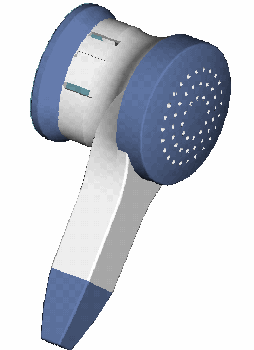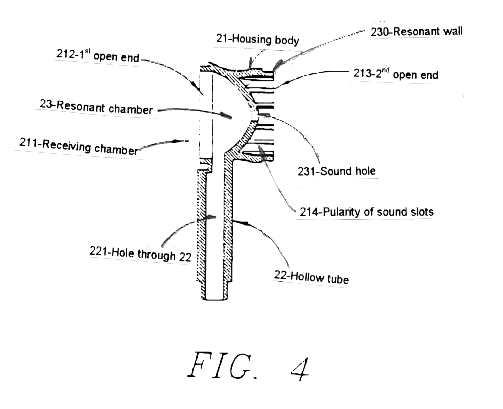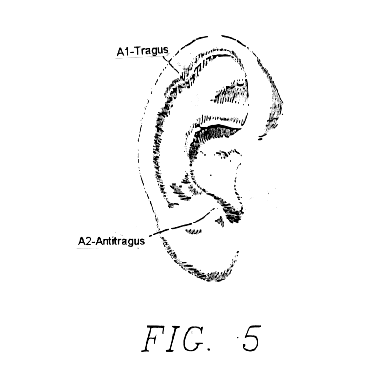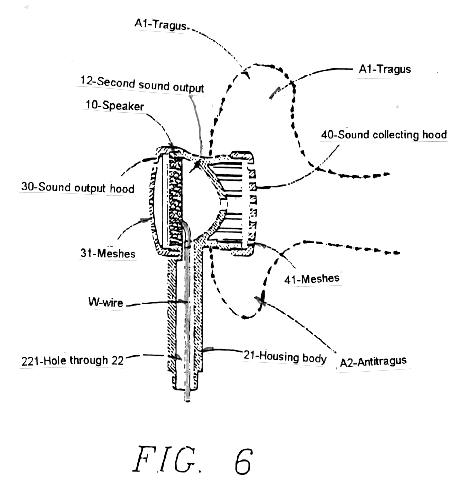![]()
![]()
New Technology Prevents Hearing
Loss
by Ben Kettlewell
 One of the pitfalls of listening to music, any type of music at
loud volumes, and especially music played through conventional
headphones, is that it can be detrimental to your hearing. In 1993,
The National Ear Care Plan claimed that 1.7% of American teens under
18 years have a hearing disability. In 1997, according to a study at
the University of Texas, Southwestern Medical Center in Dallas Texas,
severe hearing loss can occur from listening to loud music from
stereo earphones. Further, the Southwestern Medical Center stated
that : "Approximately 20% of American teens between 13 and 19 years
old have a hearing disability". As mentioned in the following press
release, "The popular earbud earphones made by Sony, AIWA, PANASONIC
and PHILIPS, when inserted into the ears completely block the opening
into the auditory canal of the wearer. Closing the opening to the
auditory canal shuts out the local, (ambient) sounds and the wearer
's hearing is isolated from the local sound environment. This can, in
certain situations, expose the wearer to hazardous and even life
threatening situations." When a standard earphone receives a signal
from a source such as a Walkman or other communicator devices, and
then transfers the sound wave to an individual's ears, of which the
perceptible frequency range is approximately 20Hz to 20kHz, the
resonance of the sound interval in the 20Hz to 20kHz frequency range
is not ideal, since the source of the sounds do not come from
expensive high technology musical devices but from a Walkman or other
low cost communicator devices. Signals from a Walkman, or other
communicator devices, can emit feedback, or noise, that often have
"beep" sounds, found at the high frequency range and "woo" sounds,
that are found in the low frequency range.
One of the pitfalls of listening to music, any type of music at
loud volumes, and especially music played through conventional
headphones, is that it can be detrimental to your hearing. In 1993,
The National Ear Care Plan claimed that 1.7% of American teens under
18 years have a hearing disability. In 1997, according to a study at
the University of Texas, Southwestern Medical Center in Dallas Texas,
severe hearing loss can occur from listening to loud music from
stereo earphones. Further, the Southwestern Medical Center stated
that : "Approximately 20% of American teens between 13 and 19 years
old have a hearing disability". As mentioned in the following press
release, "The popular earbud earphones made by Sony, AIWA, PANASONIC
and PHILIPS, when inserted into the ears completely block the opening
into the auditory canal of the wearer. Closing the opening to the
auditory canal shuts out the local, (ambient) sounds and the wearer
's hearing is isolated from the local sound environment. This can, in
certain situations, expose the wearer to hazardous and even life
threatening situations." When a standard earphone receives a signal
from a source such as a Walkman or other communicator devices, and
then transfers the sound wave to an individual's ears, of which the
perceptible frequency range is approximately 20Hz to 20kHz, the
resonance of the sound interval in the 20Hz to 20kHz frequency range
is not ideal, since the source of the sounds do not come from
expensive high technology musical devices but from a Walkman or other
low cost communicator devices. Signals from a Walkman, or other
communicator devices, can emit feedback, or noise, that often have
"beep" sounds, found at the high frequency range and "woo" sounds,
that are found in the low frequency range.
Remember Malcolm MacDowell's character being blasted with Beethoven's 9th, by the revengeful gentleman in Stanley Kubrick's classic film, "A Clockwork Orange". This is an extreme, but useful example of the possible results of exposure to very loud music in a confined environment ;>)
What really impressed me after trying out a pair of G-Cup earbuds, which are made by NTK Computer, was the quality of the sound. My colleagues and I tried them while listening to a variety of classical, jazz, ambient, pop, and world music albums. We compared them with a pair of standard studio quality AKG headphones that cost 140.00 US. The superiority of the NTK Earbuds was astounding! Not only was the frequency range just as pronounced and clear, but, surprisingly, there was an added spatial quality which was not previously present in the mix, almost like listening to the recordings in a surround-sound environment.
Another great feature of the G-Cup earbuds is the ability to hear sound from outside sources, while maintaining every nuance of the music. You can listen to the music at comfortable and isolated sound levels, while still being able to hear someone talking to you, or the phone ringing. It's good because even if you are doing other things like writing emails or playing online poker games you won't be completely cut off from what is going on around you.The principle behind this technology is that the G-Cup is an earphone without impulse noise, and, therefore, will not cause conductive hearing loss. The sound waves from the loudspeaker will not directly transmit to the middle ear, thereby preventing conductive hearing loss. The G-Cup can enhance listening enjoyment and avoid the Conductive Hearing Loss that is caused by the impact of the sound pressure.
To find out more, please read NTK's press release below, which includes illustrative diagrams:
FOR IMMEDIATE RELEASE:
NTK Inc., Announces G-Cup, a Breakthrough in Hearing Loss Prevention
NTK Computer, Inc., launches the sale of the G-Cup, earbud earphones. The unique design of the G-Cup has earned a patent in China, and Taiwan with patent pending in the USA and the Patent Convention Treaty, (PCT) member countries. Owing to the unique design of the G-Cup earbud earphones continual use and listening to stereo music for eight or more hours a day for months on end will not cause damage to a person's hearing.
At the recent CES show in Las Nevada most all visitors that tested the sounds of music from the G-Cup earbud agreed that the sounds compared favorably to an expensive multiple speaker sound system. The G-Cup does this without the burdensome weight and high expense of a stereo theater sound system. It is noteworthy that the high quality of the 3D Surround Sound of the G-Cup system has given new life to the 20 year old Walkman cassette player. (Walkman is a trademark of the Sony Corporation).
The popular earbud earphones made by Sony, AIWA, PANASONIC and PHILIPS when inserted into the ears completely blocks the opening into the auditory canal of wearer. Closing the opening to the auditory canal shuts out the local, (ambient) sounds and the wearer is hearing impaired to the local sound environment. This can in certain situations expose the wearer to hazardous and even life threatening situations.

The G-Cup earbud earphones does not impair the user's hearing. Through the unique design of the G-Cup, the ambient sounds and the sounds from the G-Cup's speaker re-enter the G-Cup earphone through openings strategically located in the mixing chamber of the G-Cup earphone. Furthermore, and extremely different from the conventional earbud systems which are "closed systems", the sounds from the G-Cup's speakers are not forced or pumped into the ear's auditory canal and against the wearer's eardrums. The G-Cup system is an "open system". The G-Cup's open system allows the 3D sounds from the G-Cup to flow freely into the auditory canal and will not exert any damaging pressure against the wearer's eardrums which can cause a loss to the wearer's hearing.
In 1990, the National Institute of Health Consensus Development Conference announced : "there are about 28 million Americans that have a hearing loss problem. Among those 28 million people at least one million have hearing loss from a high impact noise environment ". In 1993, The National Ear Care Plan claimed that 1.7% of American teens under 18 years have a hearing disability. In 1997, according to a study at the University of Texas, Southwestern Medical Center in Dallas Texas, severe hearing loss can occur from listening to loud music from stereo earphones. Further, the Southwestern Medical Center stated that : "Approximately 20% of American teens between 13 ~ 19 have a hearing disability". -more- The G-CUP is available in two models. One for listening to music, monitoring the the internet and playing computer games. A second version is for use with a cell phone and provides the user with a hands free system that allows the local sounds,e.g. , police, ambulance and fire sirens to be heard even when they occur while the user is driving a motor vehicle in heavy traffic.
Brief Description of the Drawings
Fig. 1 is a perspective view of an earphone, (G-Cup), without
impulse noise and conductive hearing loss according to the preferred
embodiment of the present invention, (G-Cup).

Fig. 2 is an exploded perspective view of the earphone, (G-Cup),
according to the above preferred embodiment of the present invention,
(G-Cup).

Fig. 3 is a sectional side view of the earphone, (G-Cup) according
to the preferred embodiment of the present invention, (G-Cup).

Fig. 4 is a sectional side view of the earphone housing of the
earphone, (G-Cup) according to the preferred embodiment of the
present invention, (G-Cup).

Fig. 5 is a perspective of the human external ear.

Fig. 6 is a sectional side view of the earphone, (G-Cup), hanged
on the human external ear according to the above preferred embodiment
of the present invention, (G-Cup).

Because of its' unique design, the G-Cup earbud protects the
user's hearing while providing a safe way for the user to enjoy
music, play computer games and communicate while driving. The G-Cup
earbud earphones can be worn for eight or more hours without causing
hearing loss or an itching sensation to the user's eardrums.
Special thanks to Clyde Elliott for his assistance.

This site is copyrighted ®© AMP/Alternate Music Press, 1997-2024. All Rights Reserved.
Unauthorized duplication and distribution of copyrighted material violates Federal Law.